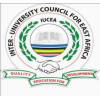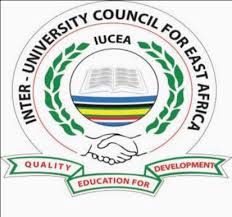Overview of the IUCEA
Historical Background
In East Africa regional higher education interactions and cooperation originates from the pre-independence era when Makerere University College was the only higher education institution in the region serving students from Kenya, the then Tanganyika, and Zanzibar in East Africa
as well as from the then Rhodesia and Nyasaland in central and southern Africa, which now consist of Malawi, Zambia, and Zimbabwe. Later in 1963, university colleges were formed in Nairobi and Dar es Salaam as constituent colleges of the then University of East Africa that had been established during the era of independence of the four countries (Uganda, Kenya, Zanzibar, and Tanganyika). Makerere College was the third constituent college of the University of East Africa.
In 1970, the University of East Africa was dissolved and the University of Dar es Salaam, Makerere University and the University of Nairobi were established as separate national universities for Tanzania, Uganda, and Kenya respectively. In the same year, due to the need to maintain collaboration between these universities the Inter-University Committee (IUC) was established under the auspices of the first EAC. The role of IUC was to facilitate contact and cooperation among the three universities (University of Dar es Salaam, Makerere University and University of Nairobi). IUC was hosted in Kampala, Uganda. In 1977, the former EAC collapsed and the support that IUC was receiving from the Partner States declined. However, IUC continued to coordinate cooperation between the three universities albeit with resource constraints that severely limited its functions.
Establishment of IUCEA
In 1980, after consultations involving permanent/principal secretaries responsible for higher education in Uganda, Tanzania, and Kenya, the vice-chancellors of the universities in the three countries met in Nairobi (Kenya) to discuss the future of the cooperation of their institutions. They agreed to sign a memorandum of understanding (MoU) committing them to maintain cooperation between their universities within the IUC framework. The MoU was subsequently signed, which also led to the transformation of IUC into the current Inter-university Council for East Africa (IUCEA). The MoU spelled out the objectives, functions, membership, and governance of IUCEA, and, just like IUC, IUCEA continued and still is hosted in Kampala, Uganda. IUCEA played its role very well until 1992 when the decline in financial support from the three governments of Kenya, Tanzania, and Uganda made it impossible to carry out the collaborative activities. This raised concern about institutional sustainability and hence prompted a study by the Commonwealth Higher Education Management Services (CHEMS) between November 1998 and March 1999 with a view to revitalizing IUCEA. The aim of the study was to develop a viable strategy for expansion and sustainability of IUCEA.
Revitalized IUCEA and Integration into EAC Framework
The Treaty for the Establishment of the current East African Community (The Treaty) was signed on 30th November 1999 and entered into force on 7th July 2000 following its ratification by the original three Partner States, namely the Republic of Kenya, Republic of Uganda, and United Republic of Tanzania. The Republic of Burundi and the Republic of Rwanda acceded to the EAC Treaty on 18th June 2007 and became full Members of the Community with effect from 1st July 2007. Upon its re-establishment, EAC recognized IUCEA as one of the surviving institutions of the former Community. Therefore, it was agreed to establish IUCEA as an institution of the new EAC. In that process in 2000 IUCEA underwent revitalization following the recommendations of the CHEMS study and in 2002 the Ministers responsible for Higher Education of Kenya, Tanzania and Uganda signed the IUCEA Protocol as an instrument that made IUCEA a legal body corporate of EAC.
The IUCEA Act, 2009
In 2009 the East African Legislative Assembly (EALA) enacted the IUCEA Act 2009, thus effectively integrating IUCEA into the EAC operational framework. The Act spells out the objectives, functions, institutional setup and systems of governance and management of IUCEA. According to the Act any university, university college, and degree awarding institution may apply for and get admitted to the IUCEA membership as long as it is properly incorporated in the EAC Partner State where it is operating and is pursuing objectives that are consistent with the functions of IUCEA as spelled out in the Act.
Main Objectives
- Facilitate networking among universities in East Africa, and with universities outside the region;
- Provide a forum for discussion on a wide range of academic and other matters relating to higher education in East Africa; and
- Facilitate maintenance of internationally comparable education standards in East Africa so as to promote the region’s competitiveness in higher education.
Main Roles and Functions
- Coordinate inter-university cooperation in East Africa;
- Facilitate the strategic development of member universities; and
- Promote internationally comparable higher education standards and systems for sustainable regional development.
The IUCEA Act 2009 also mandates the institution to advise the EAC Partner States on higher education matters, and to contribute towards:
- Meeting national and regional developmental needs;
- Developing quality assurance processes in order to ensure that teaching, learning, and research in the region achieve and maintain international standards;
- Assisting member universities and other higher education institutions to identify and implement good practices in institutional management and use of resources;
- Developing human resource capacity in all disciplines of higher education in the Community; and
- Promoting equal opportunities for all higher education students in East Africa, including those with special needs.
Mandate within the Community
The demand for higher education in East Africa has been growing tremendously since the last decade and the number of public and private university institutions has also been increasing exponentially. For example, the number of IUCEA member university institutions has grown from 33 in 2000 to 87 at present (2011). At the same time, IUCEA has experienced considerable institutional growth within the same period, which has led to the expansion in activities. Therefore, it is important that IUCEA continuously sets policy strategies and develops appropriate interventions so as to ensure that the institution continues to effectively serve the Community as its institution responsible for the strategic development of higher education and research in the region, through facilitating support and promoting networking among university institutions in the Community, and between them and universities beyond the region.
The favorable political and policy environment has provided the impetus for socio-economic growth in the EAC Partner States such that in the last decade (2000 – 2010) the economies of the Partner States grew at an average rate of about 5% per annum. That rate of economic growth has spurred demand for well-trained human resources to support the growing economies and the emerging economic opportunities, and to satisfy the expanding labor market. Furthermore, the developments in the Community, such as the coming into force of the Common Market Protocol, Customs Union and Monetary Union, and the move towards regional integration imply that universities and other higher education institutions in the region should respond positively by developing training and research programmes that meet the human resource capacity needs and sustainable socio-economic development of the region. Furthermore, university programmes have to be relevant, harmonized and standardized to ensure quality of the graduates and research, and to permit mutual recognition of qualifications across the region, as envisioned in the EAC Common Market Protocol. Therefore, IUCEA being aware of its role of ensuring that university institutions in the Community uphold these requirements has continued to develop appropriate systems and tools to support the institutions in the region.
Responsiveness to EAC Agenda
One of the key aspirations of EAC is to attract and sustain investments in the different sectors of the economies in the Partner States so as to spur socio-economic development and reduce poverty. In that regard, information from research is critically needed to guide investment choices and decisions. As such, research and development initiatives within and outside the universities need to be promoted, supported and guided in a coordinated manner. IUCEA is well positioned to undertake these tasks because universities are endowed with a diversity of well-trained human resources. In addition, universities need guidance to develop skillful human resources with diverse competencies at different levels in order to satisfy the current and future labor market needs and to sustain the region’s socio-economic development. This places greater demand on IUCEA to act proactively in its capacity as the EAC institution responsible for promoting and coordinating human resources development and research in all strategic areas that would support sustainable socio-economic development and regional integration.
IUCEA realizes this responsibility and hence considers it important to develop appropriate policies and other intervention strategies so as to make it a truly strategic institution of EAC. Furthermore, there is a need to realize an institutional transformation of IUCEA through the involvement of higher education institutions and other stakeholders in the region. Such strategic transformation and formulation of policy directions would require the promotion of dialogue and strategic thinking with stakeholder institutions and the general public within the Community, aimed at identifying areas in higher education curricula and relevant research that will support human resources capacity building for East Africa’s sustainable socio-economic development and to promote the region’s global competitiveness. Similar interventions are also needed for the promotion and expansion of higher education equity and access opportunities so as to attain a critical mass of graduates required to sustain socio-economic development in the region and to satisfy current and future human resources needs, particularly for the emerging socio-economic opportunities. There is also the need to take into consideration gender perspectives focused on closing the gender gap in access to higher education and in the leadership of university institutions in the region. But in so doing, there is always the need to maintain the quality standards of the education provided to the levels set internationally. In this regard, IUCEA has continued to institute appropriate interventions, in the form of policy frameworks, five-year strategic plans, programmes and projects, and others including the recently formulated roadmap.
The Roadmap
The IUCEA plans are developed and implemented within the context of Article 5 and 102 of the EAC Treaty aiming at fostering cooperation in education and training towards the harmonization of higher education systems. The need to undertake an institutional transformation of IUCEA led to the development of a ten-year Perspective
Plan (2006-2015) that defined the mission, vision, core functions and guiding theme. The perspective plan was to be implemented through a cascading set of operational plans, including:
- The first Five-Year Rolling Strategic Plan (2006-2011), whose purpose was to transform IUCEA into an effective regional advocate and catalyst for the strategic development and management of higher education in East Africa. The renewed core functions of IUCEA included coordination of inter-university cooperation, facilitation of strategic development of member universities, and promotion of quality of higher education.
- The second Rolling Strategic Plan (2011-16) addressed the Community’s expectations of IUCEA to provide strategic directions that respond to the dynamics and development trends in higher education in the EAC Partner States and beyond. In order to carry out the above mandates six strategic objectives were identified, with a focus on fostering; quality, research, ICT, harmonization of curricula, institution strengthening, support to universities and exchange of staff and students.
- The third Strategic Plan 2016-21 was a product of extensive consultations and participatory process involving various stakeholders informal consultations, staff retreats, validation meetings, review by the 16th meeting of Planning, Finance & Human Resources Committee and finally, the 24th Meeting of the Executive Committee on June 29th, 2017 that approved the Strategic Plan. The development of the above strategic plan was in tandem with the EAC process to develop the 5th EAC Development Strategy 2016-21. In a workshop held to develop the 5th EAC Development Strategy, a submission of IUCEA performance under the 4th Development Strategy was done together with proposed Strategic Objectives under the 5th EAC development Strategy 2016 -2021.
The IUCEA Strategic Plan 2016-21 is therefore aligned with the 5th EAC Development Strategy 2016-21. Download [PDF]


